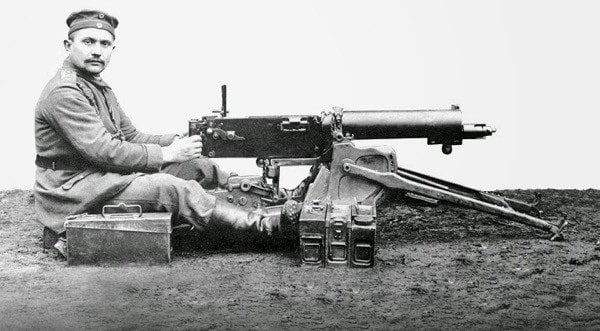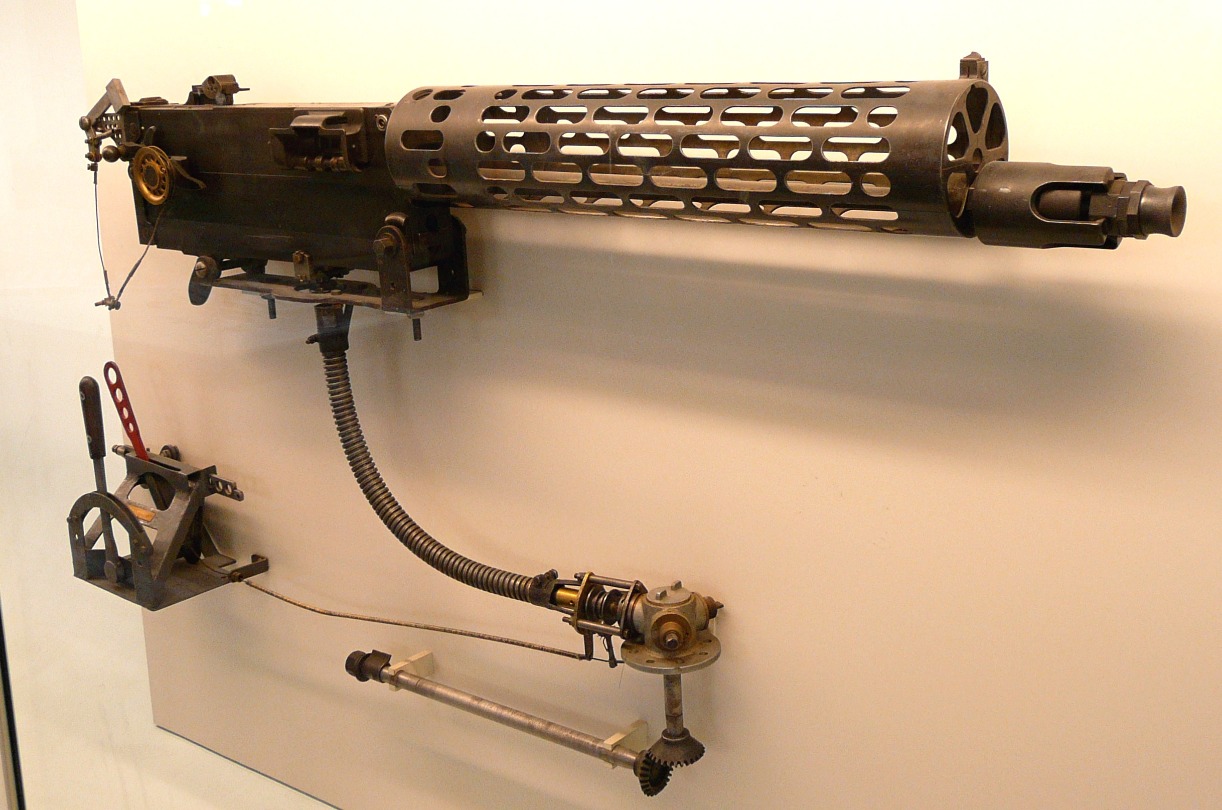Depending on the gunner and conditions, a barrel modification could be needed as frequently as every 200 to 250 rounds. When the hot barrel was removed, it was set aside until it was cool enough to utilize once again. Machine-gun teams would have as many as 6 spare barrels on hand.
Driving through a recently protected area in Belgium, the sharp-eyed Liniewski identified the deserted weapon in a field. Liniewski then did what any unsupervised GI would have done in that position; he stopped his truck and took the chance to snag a great keepsake for the folks back home. As a support soldier, Liniewski was not familiar enough with weapons to dismantle his MG-42, so he hung on to it for a while till he discovered a camp where German prisoners of war were being held.
The weapon remained in the Liniewski family until 2016 when his boy Marty contributed the weapon to the Museum. In spite of its tendency to get too hot, the MG-42 was an outstanding weapon that was light-years of ahead of the US equivalent, the Browning M-1919A4 machine weapon. Germany produced roughly 400,000 MG-42s throughout the war, some of which are still in active duty.

Taken together, all these weapons offered the Red Army a more useful series of assistance weapons, better able to challenge the Germans for fire supremacy on the battleground. Completely illustrated, this research study discusses the technology and the methods of these gatling gun. Noted authority Chris Mc, Nab sets out how these gatling gun were dispersed and tactically used and provides many examples of the weapons in action, from assault groups on the streets of Stalingrad to tank crews struggling for survival at Kursk.
Arms Of The First World War Fundamentals Explained
Illustrated with high-quality photos and specially commissioned art work, this is a deep analysis of these important tools of warfare within the Soviet forces.
Taken together, all these weapons gave the Red Army a more useful series of support weapons, better able to challenge the Germans for fire superiority on the battleground. Totally illustrated, this study discusses the technology and the techniques of these gatling gun. Kept in mind authority Chris Mc, Nab sets out how these gatling gun were distributed and tactically applied and provides numerous examples of the weapons in action, from assault teams on the streets of Stalingrad to tank crews struggling for survival at Kursk.
Illustrated with top quality photographs and specifically commissioned artwork, this is a deep analysis of these necessary tools of warfare within the Soviet forces.
The gatling gun business, commanded by a captain, had an assigned strength of 6 commissioned officers and 172 gotten men, and brought 16 guns, four of which were spares. Within the business there were three squadrons and a headquarters area. A first lieutenant led the very first army, while 2nd lieutenants led squadrons two and 3.
Famous Guns Of Wwi: Rifles, Machine Guns, & Pistols for Dummies


Within each area were 2 weapon teams, each with one gun and nine men, led by corporals. The weapon team had one fight cart, pulled by a mule, to carry its weapon and ammo as near the shooting position as opponent fire permitted. From there the teams moved the weapons and ammo forward by hand.
The battalion had a strength of 16 officers and 377 enlisted men and was motorized. However, it had only two companies, identical to the other machine gun companies in terms of personnel and weapons. Each gun squad used a special motor vehicle to transport its workers, weapon and devices. The battalion was usually in department reserve, all set to perform missions as the division commander ordered.
In this function the guns were placed 300 to 1000 meters to the back of the cutting edge. When they utilized their guns in that style, the gatling gun officers often ran into opposition from the rifle business leaders, who chose to have the weapons farther forward, fearing that their infantrymen would be at risk of roaming low rounds as they advanced under the overhead maker gun fire.
Additionally, they soon found that the device guns were high top priority targets for opponent fire, and that it was advantageous to have the weapons at some distance from the infantry positions. Since opponent gatling gun presented the best threat to the assaulting troops, the gatling gun teams strove to locate the opponent guns and to focus their fire upon them.
The 15-Second Trick For Trench Warfare And The Development Of The Light Machine Gun
A percentage of the guns was held back as a reserve under command of the maker gun officer. 6Machine gun tactical doctrine determined that in the defense the Hotchkiss weapons should only seldom lie within 100 backyards of the front line and that at least two-thirds of the guns must be echeloned back through the entire protective position, located so that adjacent guns would be mutually supporting.

7 To find other features on the visit our THE DOUGHBOY CENTER wants to continuously expand this feature. Additions and discuss these pages might be directed to:.
I was impaled on this. My only fear was that he would press the trigger which would have made a hell of a mess. In the meantime, my sergeant who was near he saw me; can be found in close; shot the fellow and after that hoisted me, with the help of another man, off the bayonet.
A bayonet injury directly it goes in it injures and the withdrawal is probably further suffering than the 'putting in' since the 'putting in' is instantaneous. Another type of weapon was the trench club.